Did you buy a lovely Limelight hydrangea in the local nursery? If so, you might wonder how much it will grow in a year. Don't worry. We've got your back. We've researched this flowering shrub to bring you answers. Here's what we found.
The growth rate of the Limelight hydrangea is remarkably fast, unlike other varieties of hydrangeas. The height and spread will expand by 1 to 2 feet within a year. However, it becomes slower upon reaching its peak size.
In this post, we have a detailed discussion of the Limelight hydrangea. We'll also explore other related topics, such as their growth, primary care, uses, and ideal companion plants. So, please keep on reading to learn more.

What is Limelight Hydrangea?
In the late 80s, a plant breeder from the Netherlands cultivated the Limelight or "Zwijnenburg" hydrangea, a deciduous shrub. It is a crossbreed of two unknown varieties of panicled hydrangea (Hydrangea paniculata). In less than two decades, it became a patented cultivar (PP# 12, 874) in the US.
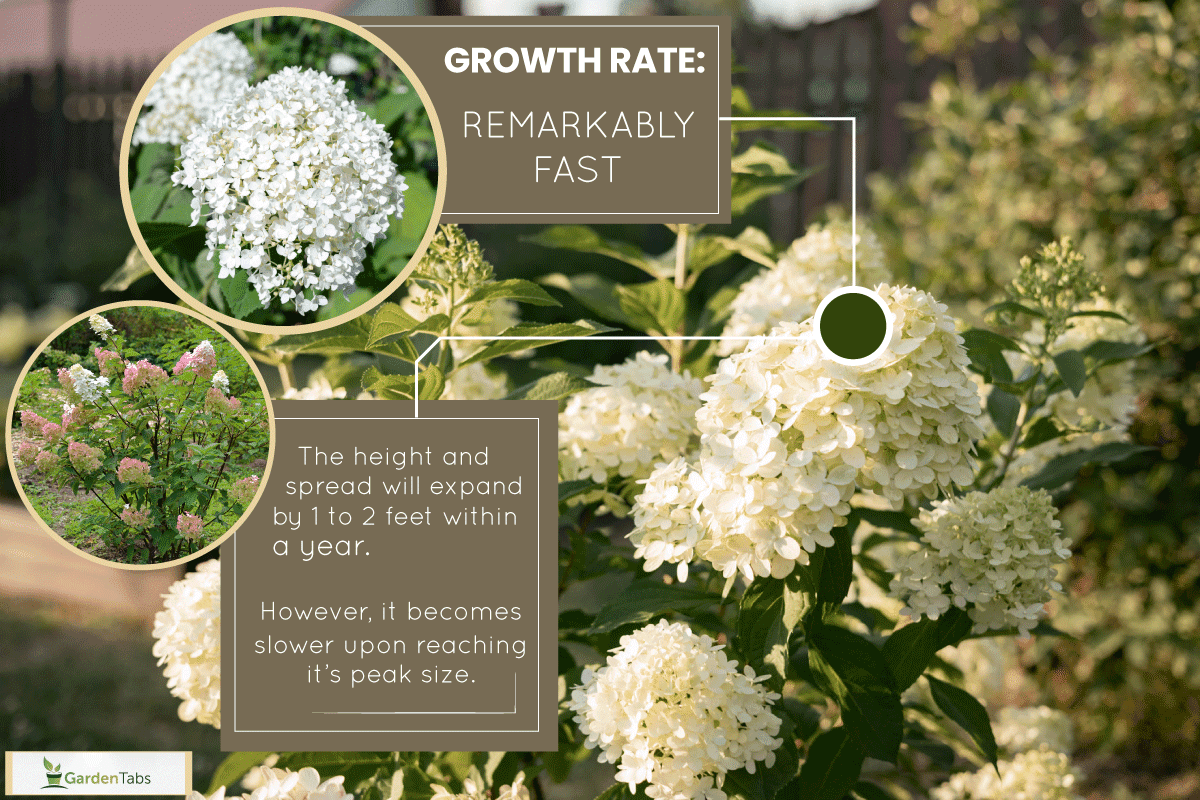
Two horticultural societies granted prestigious distinctions to this versatile hydrangea: the Award of Garden Merit and the Gold Medal Award.
Moreover, it has two sub-cultivars. The "Limelight Prime" is smaller than the original. Another type is the "Little Lime" hydrangea, a dwarf version. They are both excellent for compact spaces.
The panicled hydrangeas originated in Japan, Korea, and China. Nonetheless, they are prevalent in other continents, such as America, Australia, and Europe.

Along with the Limelight, you can opt for various cultivars:
- Big Ben
- Fire Light
- Phantom
- Pink Diamond
- Pinky Winky
- Praecox
- Silver Dollar
How Do You Identify A Limelight Hydrangea?
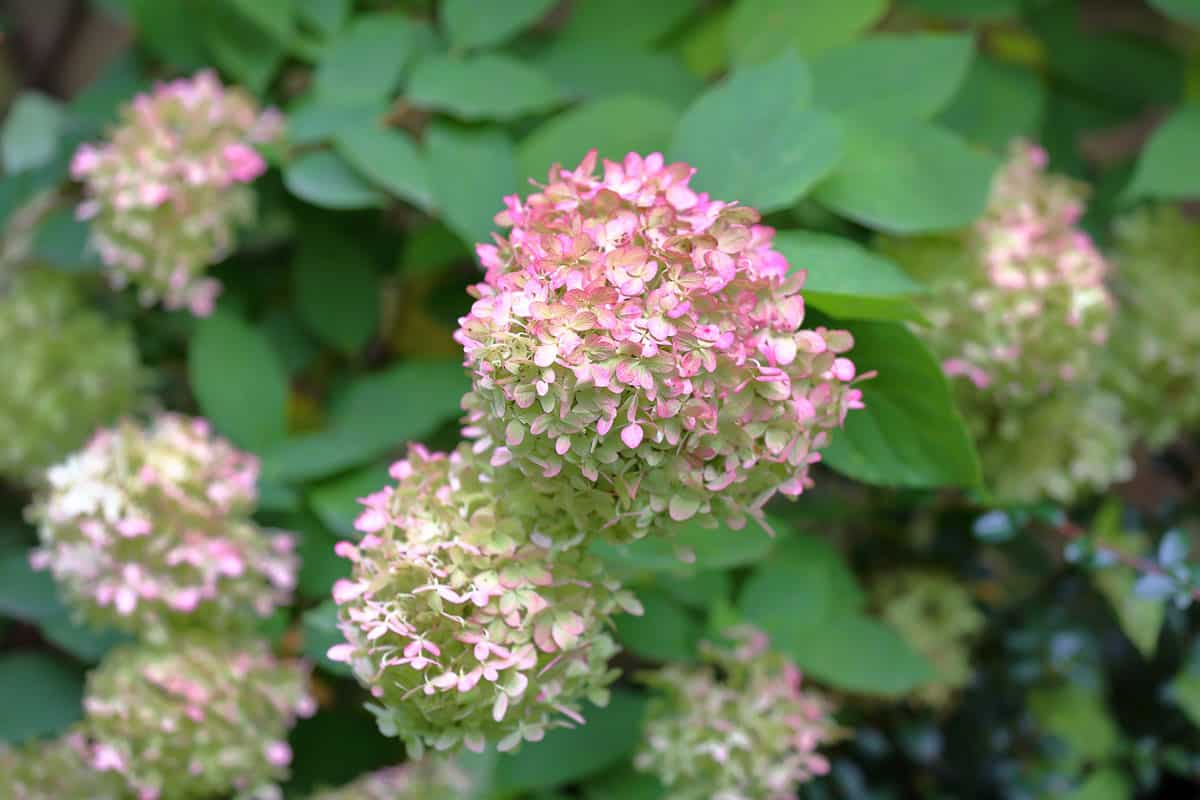
Unlike other hydrangeas, Limelight remains upright. For this reason, its body does not bend to the soil even after strong wind and rain. It has an identical height to the Pinky Winky and Quick Fire, among the panicle hydrangeas. In the following sections, we'll discover more of its features.
Flowers
The flowering time begins in the mid-summer. The Limelight Prime's flowers can last beyond three months. The cross-shaped flowers appear in dense clusters and differently every season.
At the onset of its lovely blossoming, they are in lime green. Hence, the name of this plant. Then, they turn white from summer to fall. When autumn starts, they transform into deep pink. Meantime, they release the subtle fragrance.
Leaves
Its green and elliptical leaves turn red or burgundy during fall. It also shows an irregular round canopy.
Bark
The bark color is light brown to light gray, and the surface with crevices shreds upon maturation.
How To Grow Limelight Hydrangea?
Because the Limelight hydrangea is a certified trademark, only certain entities can reproduce it. Thus, the public cannot propagate it by cuttings or seeds under the US Plant Protection Act. However, this exclusive breeding continues for 20 years from the patent date.
Similarly, it is also incompatible with water-based raising or hydroponics because it cannot sprout roots from its cuttings.
Nonetheless, you can purchase it online or locally. A single pot of this shrub costs between $76.99 and $91.99, depending on its size. Afterward, transfer it into a large container with a potting mix.
Basic Care For Limelight Hydrangeas
Note this overview of taking care of these hydrangeas.
- Sowing Season: early spring to fall
- Maturation Period: 4 to 5 years
- Average Height and Spread: 6 to 8 feet tall and wide
- Average Lifespan: until 50 years
- Soil Condition: moist and well-drained; neutral to acidic; clay, sand, or loam
- Light Exposure: full sun to partial shade
- USDA Hardiness Zones: 3 to 8
Landscape
The limelight hydrangeas are ideal for garden landscaping, whether residential or commercial. It is suitable for beds, borders, hedges, patios, and containers. Adding these striking shrubs will attract butterflies, creating a more appealing view.
Spacing
Provide them enough space if you opt for growing multiple limelight as hedge or border. Allocate 7 to 8 feet intervals between trees because they spread out quickly. Giving them plenty of room prevents them from competing with one another.
Watering
This low-maintenance plant requires average irrigation. Thus, to avoid over-watering your plant, schedule it once a week or every 10 days. Likewise, ensure its moisture level by dipping your finger into the topsoil.
If you want to promote hydrangea blossoming, check this article: How Long For Hydrangea To Bloom?
What Fertilizer Is Best For Limelight Hydrangeas?
Nourish your Limelight hydrangea with a slow-release and balanced fertilizer. Labeled with NPK 10-10-10, this mixed fertilizer has equal amounts of primary nutrients such as nitrogen, phosphorus, and potassium.
Before application, test the soil's pH first to know which nutrients are deficient. Cover it in spring and summer before new growth to encourage enormous blossoms.
Furthermore, layer the plant with 2 to 3 inches of compost or mulch to protect it during extreme temperatures because its roots are shallow.
Click here to see this balanced fertilizer on Amazon.
How To Keep Limelight Hydrangea Small?
If you prune it regularly, you can keep it within the lower range or 6 feet high instead of its maximum height. The ideal season for this maintenance is between late winter and early spring.
With sanitized hand pruners, thin out the shrub by 1/3 of its overall height. Prioritize the removal of the dead or diseased branches, then the crossed ones.
Watch this video to visualize the three-step pruning process for this hydrangea.
Should You Deadhead Limelight Hydrangea?
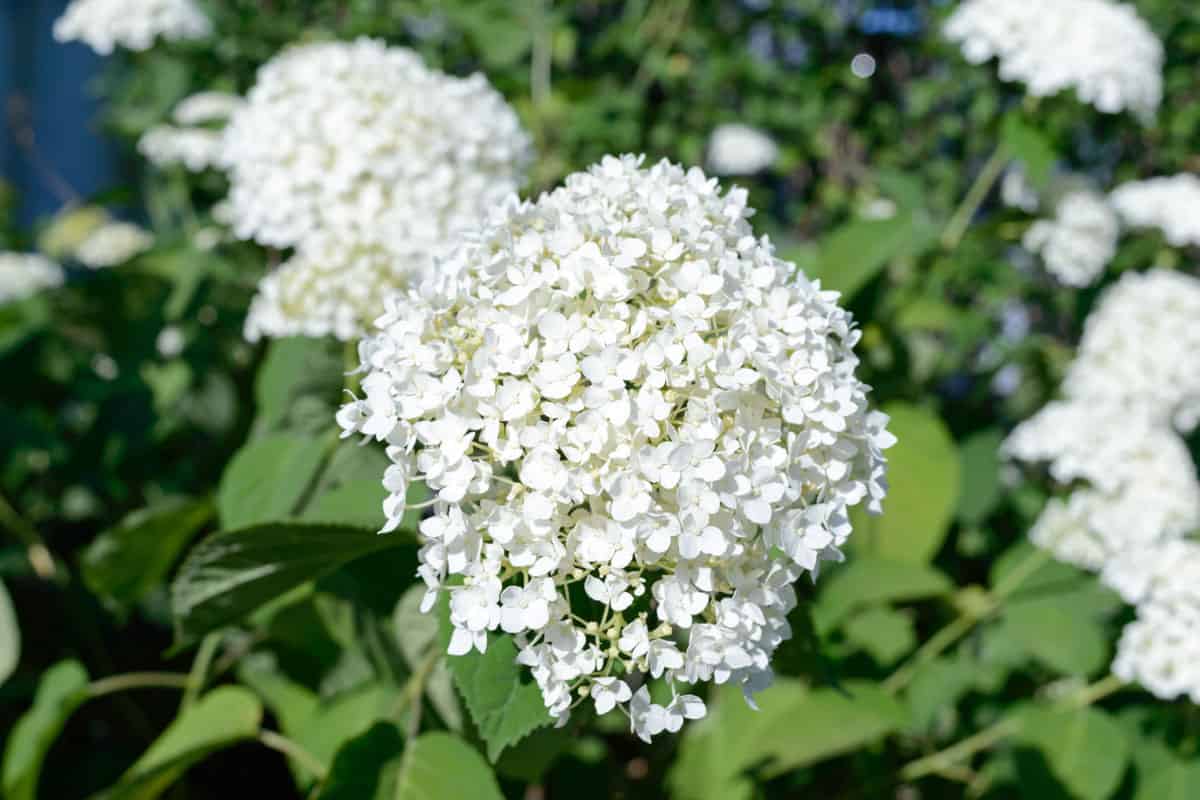
Yes, dead-heading is part of pruning the Limelight. When your shrub fades or turns brown, it is time to deadhead. Cut spent blooms from the first set of large leaves on the stem. Remember, skipping this portion will not harm your shrub. But, it will yield fewer and smaller flowers.
Do Limelight Hydrangeas Like Coffee Grounds?
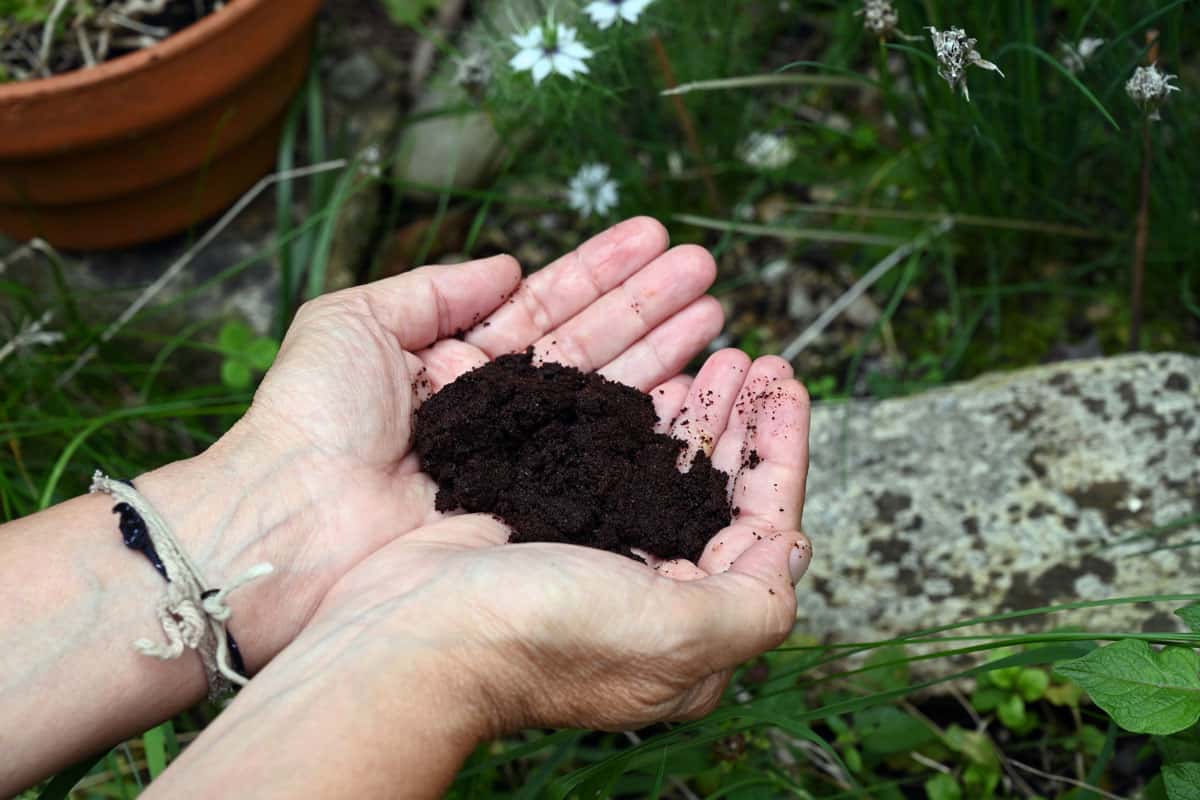
Similar to blueberries and magnolias, the limelight hydrangeas love coffee grounds. When you have fresh grounds, sprinkle a generous amount to your shrub to acidify them and increase the nitrogen levels in the soil.
However, the color of its flowers does not change as the soil acidity fluctuates. If you prefer other pigments, you can alter the blossoms of big-leaf hydrangeas (Hydrangea macrophylla) using coffee grounds.
For instance, the lower the pH, the higher the acidity. As a result, bluer flowers will show. Otherwise, alkaline soil triggers rosy ones.
Moreover, the best time to add the leftover coffee grounds is before the flowering period. Follow your fertilizing schedule for this approach. Remember, be patient because it will take time to be effective.
Do Eggshells Help Limelight HydrangeLike
Crushed eggshell is suitable for your Limelight, comparable with coffee grounds. However, they work oppositely. It neutralizes the acidic soil because of its inherent alkalinity. Likewise, it wards off pests.
This method is easy to perform. First, clean and dry the collected eggshells. Next, bake them in the oven for 2 minutes at 212 degrees Fahrenheit. This step further kills salmonella, the common bacteria in eggs. Afterward, grind the shells finely using a blender or mortar and pestle.
Adding a handful of eggshell powder during spring will boost the calcium levels, strengthening your hydrangea.
What Are The Pros And Cons Of Limelight Hydrangea?
As a gardener, you must know the advantages and disadvantages of having this hydrangea.
Advantages
Enjoy the benefits they offer throughout their life cycle.
- They require little effort and time to look after them.
- Whether in cold or drought-prone areas, they thrive in a broad range of conditions.
- They produce nectar needed for pollination.
- During the four seasons, their flowers exude bold contrast with the foliage.
Disadvantages
Below are a handful of problems you will encounter while caring for them.
- Young or potted hydrangeas are prone to yellowing leaf edges because of the heavy use of fertilizers.
- They are susceptible to contracting orange leaf spots and powdery mildew.
- Without breathable covering, freezing weather damages the leaves.
- Overwatering causes edema and root rot.
- Insect infestation, like aphids and spiders, is prevalent in dry and dusty areas.
- They attract animals such as birds, deer, and squirrels, leading to weakened roots and branches.
To take action or prevent these common concerns, view this guide: Hydrangea Turning Brown And Dying–What To Do?
What Are The Uses of Limelight Hydrangeas?
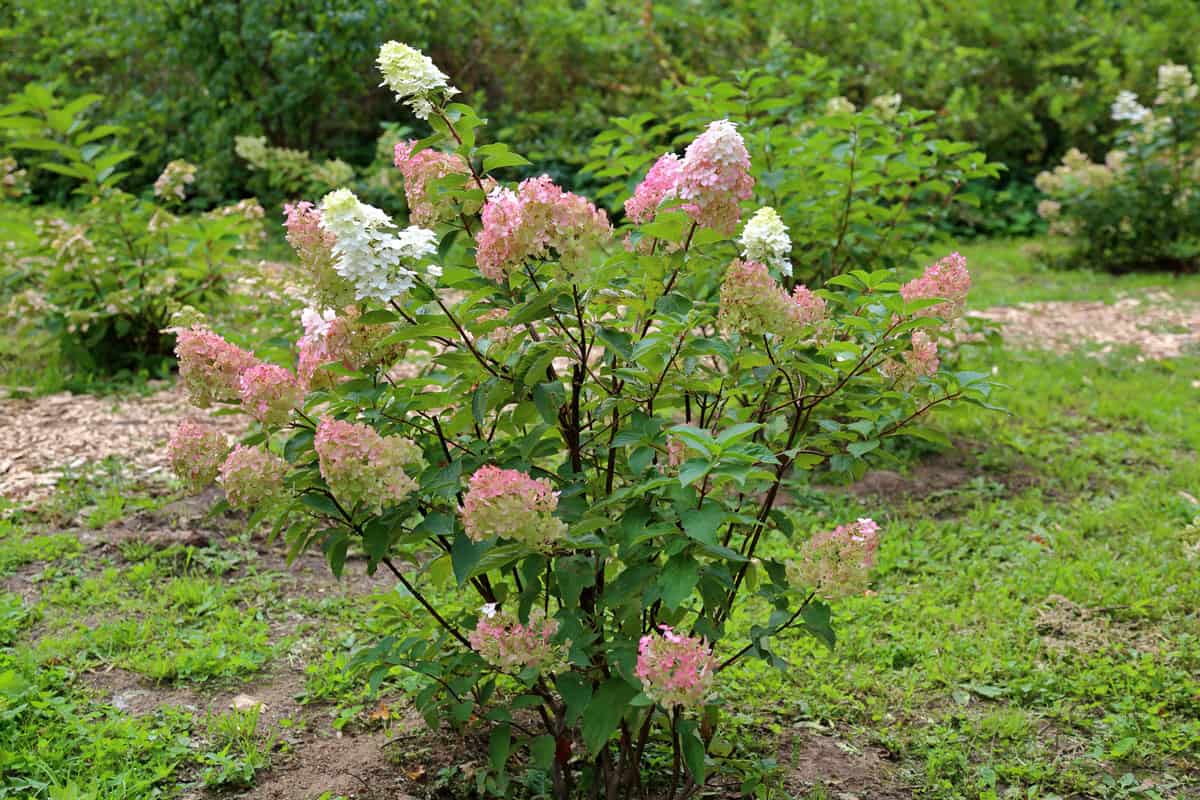
Like other ornamental plants, limelight hydrangeas are effective for revamping any space, either growing or harvested.
- Backdrop
- Dried Flowers
- Fences
- Flower arrangement
- Garden (cottage, shade, or cutting)
- Hedge
- Thriller plant
Are Limelight Hydrangeas Poisonous?
According to the American Society for the Prevention of Cruelty to Animals, their leaves and sap are inedible and toxic, even though this panicle shrub is appealing.
Along with other hydrangeas, it contains cyanogenic glycoside. It is poisonous to cats, dogs, and horses when ingested. Generally, they are dangerous to mammals. Hence, you must also keep it away from children.
Moreover, its poisoning may lead to different symptoms: diarrhea, nausea, vomiting, and fatigue, to name a few. Consult a local veterinarian or poison control upon noticing said symptoms.
What Plants Go With Limelight Hydrangeas?

Sow plants beside the hydrangeas to lure away pests and boost pollination and soil quality in your garden. Here are a few colorful shrubs ideal to be their companions.
- Artemisia
- Azalea
- Chinese juniper
- Chrysanthemums
- Cranesbill
- Crepe Myrtle
- Gardenia
- Hosta
- Milkweed
- Rhododendrons
- River birch tree
- Salvia
- Yew
Final Thoughts
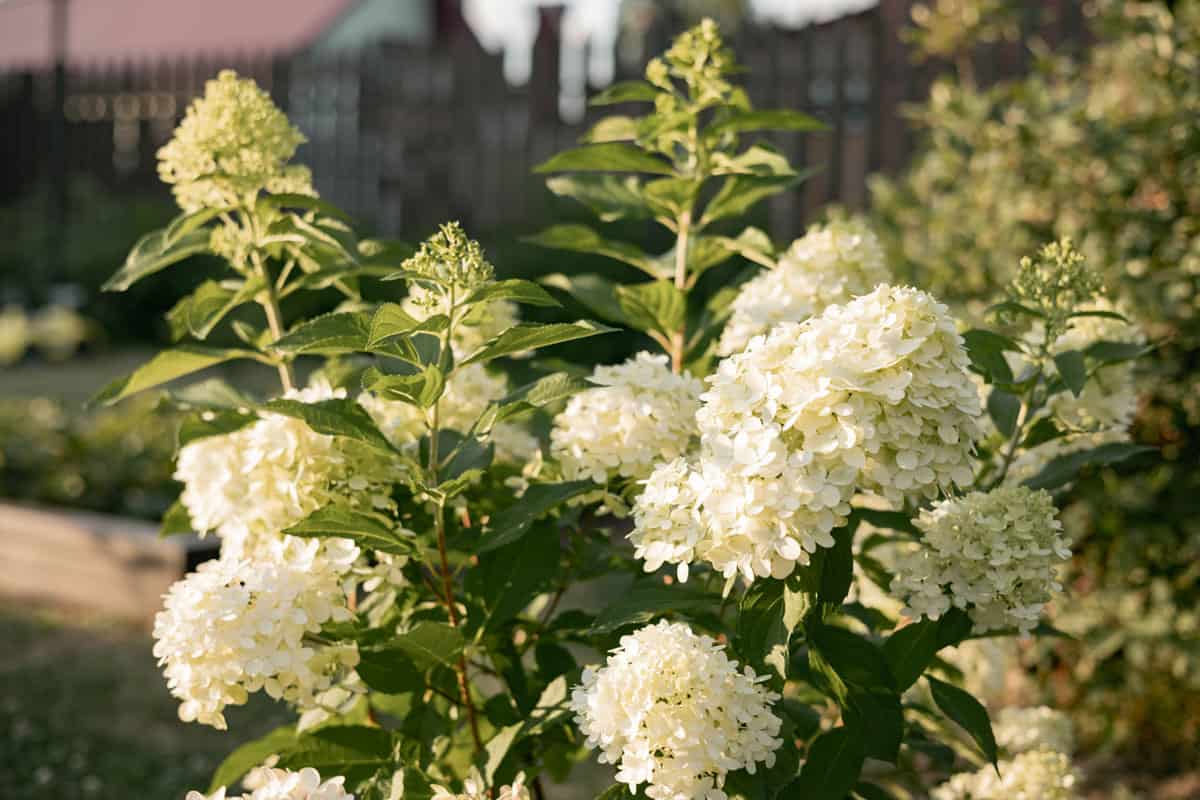
Premium plants, like limelight hydrangeas, mature rapidly. However, proper conditions and care are prerequisites for their overall health and flowering.
Maximize their benefits and boost their growth by introducing companion plants. Moreover, take action against its vulnerability to disease and infestation.
Thanks for reading! If you enjoyed this post, explore these articles about general care for hydrangeas:


I’ve had my limelight hydrangea for3or4 years they r growing slow they r n full sun.have not fertilized with 10-10-10 yet used miracle pellets.please tell me what to do to get them to grow I have 5 n a row .suppose to b a hedge .
This article may help. Please check this out: https://gardentabs.com/do-hydrangeas-like-clay-soil/